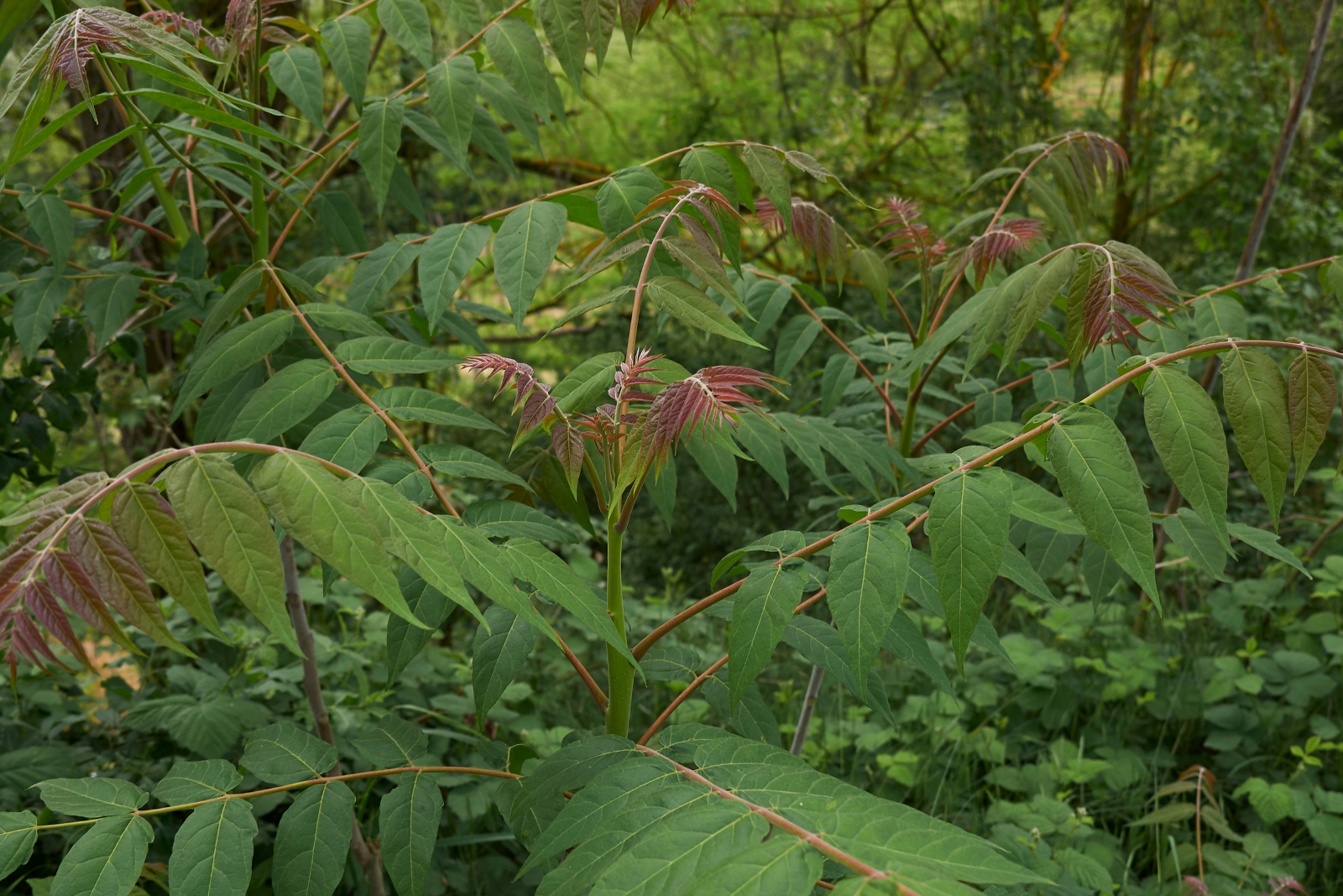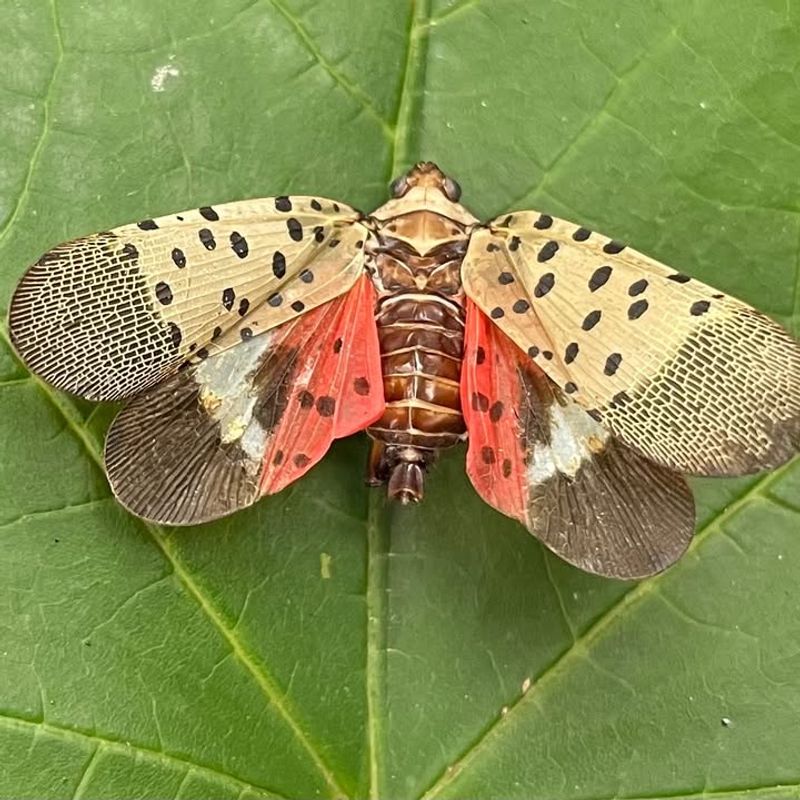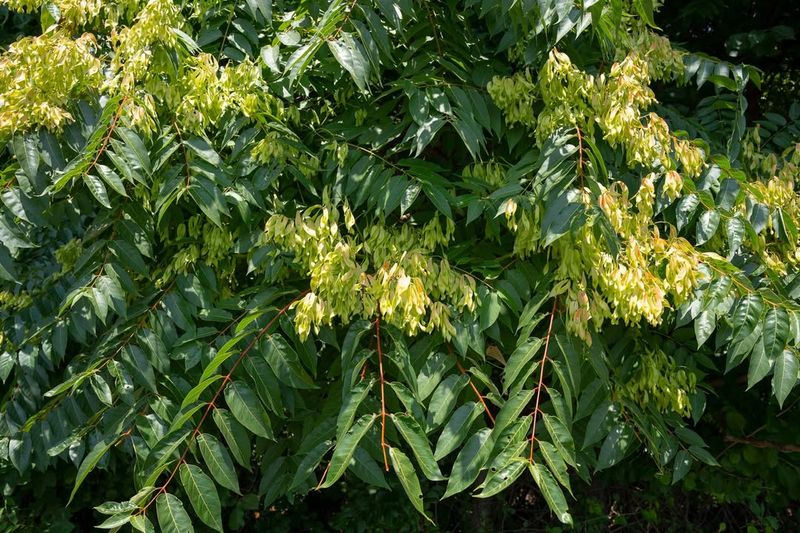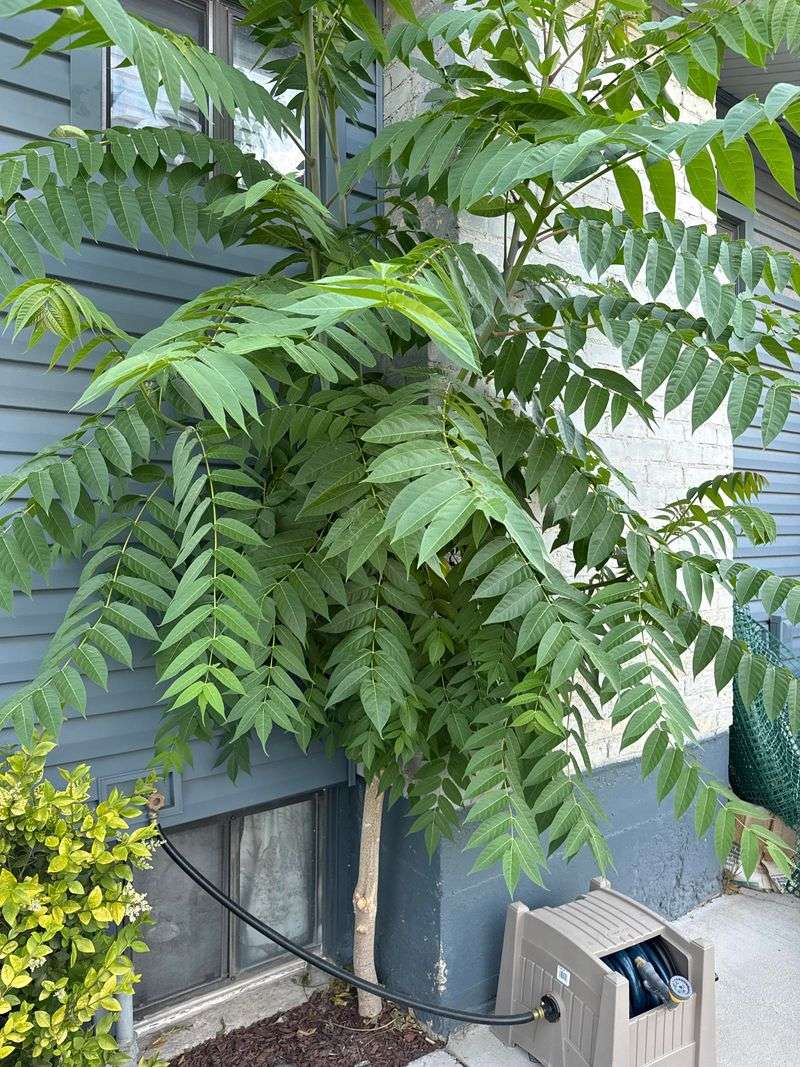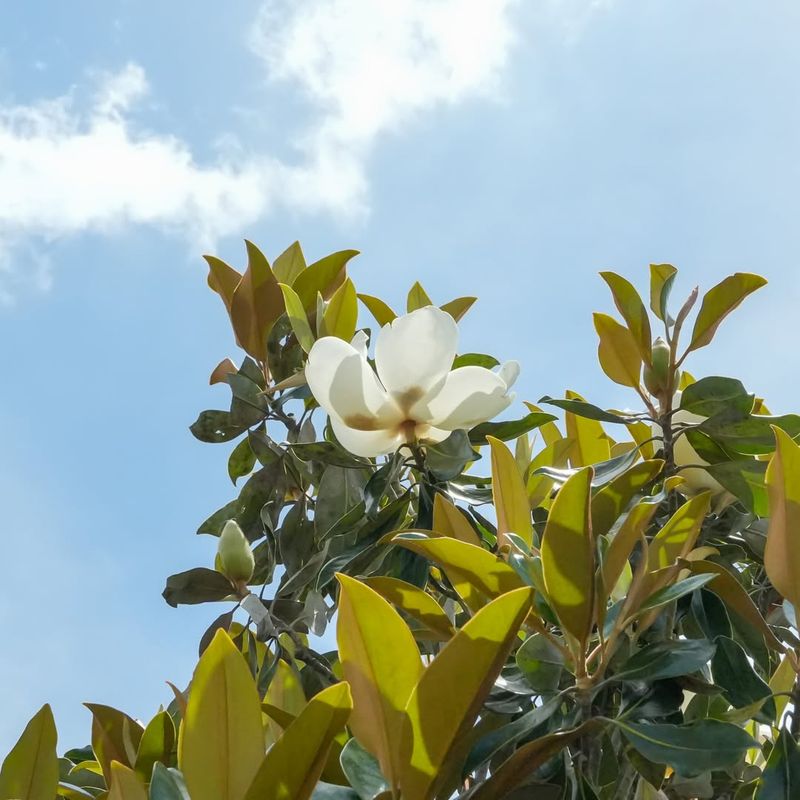Lanternflies don’t just wander into a yard out of curiosity. They follow cues, scents, and hosts they can’t resist. Plant the wrong thing, and it’s like rolling out a welcome mat.
The biggest offender in Georgia landscapes is the fast-growing tree of heaven.
1. The Tree Of Heaven Originates From China
Originally brought to America in the 1700s as an ornamental plant, Ailanthus altissima traveled thousands of miles from its native China. Gardeners loved how quickly it grew and how it survived in poor soil conditions.
Back then, nobody realized this foreign species would spread aggressively across the country. The tree escaped cultivation and now thrives in urban areas, roadsides, and forests throughout Georgia and most other states, crowding out native plants that wildlife depends on for food and shelter.
2. Spotted Lanternflies Use It As Their Favorite Host
Spotted lanternflies absolutely love the Tree of Heaven, treating it like their preferred hotel and restaurant combined. Female lanternflies lay their eggs on the bark, and the young insects feed heavily on the tree’s sap when they hatch.
While these pests can survive on other plants, they thrive best on this particular species. Removing Trees of Heaven from your property makes your yard far less attractive to these damaging insects, reducing the chance they’ll establish a population nearby.
3. Georgia Faces A Growing Lanternfly Threat
Though spotted lanternflies haven’t fully invaded Georgia yet, neighboring states are already battling serious infestations. Experts warn that it’s only a matter of time before these pests arrive in full force across the Peach State.
Agriculture officials worry about damage to crops like grapes, peaches, and soybeans. Homeowners should stay alert and report any sightings immediately. Taking preventive action now, including removing Trees of Heaven, gives Georgia communities a fighting chance against this approaching threat.
4. Lanternflies Damage More Than Just Trees
When spotted lanternflies feed, they pierce plants and suck out nutritious sap, weakening the host. They excrete a sticky substance called honeydew that coats leaves, sidewalks, and outdoor furniture.
Honeydew attracts black sooty mold that blocks sunlight from reaching plant leaves, further stressing vegetation. Beyond agricultural losses, these pests create messy conditions in yards and parks. Their presence disrupts outdoor activities and can even lower property values when infestations become severe enough to damage landscape plants.
5. Identifying The Tree Prevents Accidental Planting
Many Georgia people confuse the Tree of Heaven with beneficial native species like sumac or black walnut. Learning key identification features helps you avoid accidentally planting or preserving this invasive troublemaker.
Look for large compound leaves with 11 to 25 leaflets, each having small glandular notches near the base that release a foul odor when crushed. The bark appears smooth and gray on younger trees. Once you know what to look for, you’ll spot these trees everywhere and can take appropriate removal action.
6. Removing The Tree Requires Careful Planning
Simply chopping down a Tree of Heaven won’t solve your problem because it spreads through aggressive root systems. Cut stumps quickly sprout dozens of new shoots, creating an even bigger infestation.
Successful removal requires cutting the trunk and immediately applying herbicide to the fresh stump to kill the roots. Some experts recommend making cuts in the bark and applying herbicide directly during the growing season. Always follow product instructions carefully and consider hiring professionals for large trees.
7. Native Alternatives Beautify Without The Risk
Instead of planting Trees of Heaven, Georgia homeowners have wonderful native options that support local ecosystems without attracting destructive pests. Southern magnolias offer stunning flowers and glossy evergreen leaves throughout the year.
Flowering dogwoods provide gorgeous spring blooms and fall color, while red maples grow quickly and display brilliant autumn foliage. Native trees support beneficial insects, birds, and other wildlife that make your yard healthier and more vibrant. Choosing appropriate species protects Georgia’s natural heritage for future generations.

